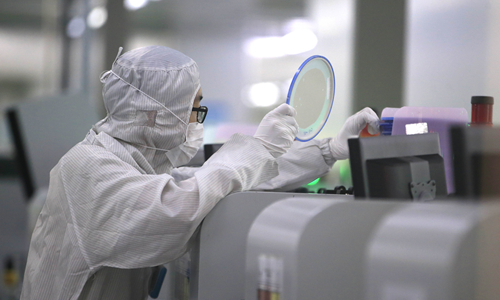It is a gamble on US part and they might loose it too
Washington is betting the farm on the hope that China and its partners won’t find a workaround in time. If they do, the new restrictions will be America’s last hurrah as a tech power. Ten years ago China would have been helpless. But during the past decade Chinese universities have muscled their way up to world class, thanks in large part to the return of tens of thousands of Chinese with doctorates from American universities.
China’s tech industry has the depth and breadth to attack the whole range of semiconductor production issues. Throughout the escalating Sino-American tech war, the Chinese have come up to speed faster than either Washington or the industry consensus expected.
The risk is that the US might lose the crown jewels – its leadership in semiconductor technology. That’s why the Trump Administration hesitated to impose a third-party export ban earlier.
At the urging of the US Defense Department, the White House rejected the nuclear option late in 2019, after America’s top tech designers warned that Chinese retaliation would shut them out of the Asian market. National Economic Council Chairman Larry Kudlow told the Wall Street Journal February 4: “We don’t want to put our great companies out of business.”
The president tweeted February 18: “The United States cannot, & will not, become such a difficult place to deal with in terms of foreign countries buying our product, including for the always used National Security excuse, that our companies will be forced to leave in order to remain competitive.”
Trump changed his mind after blaming China for the coronavirus epidemic. His trade adviser Peter Navarro declared last week, “We are at war with China,” and accused China of deliberately sending infected passengers on international flights from Wuhan to spread the virus.
Some observers attribute Washington’s increasingly hostile stance towards China to election rhetoric, but Trump didn’t have to throw a hand grenade into the semiconductor supply chain to get votes.
There is another, more ominous motivation. America faces a GDP decline of perhaps 10% during 2020, and an extremely uncertain recovery as it gradually reopens business activity without widespread testing or contact tracing.
The Asian economies – where the epidemic is largely under control– are coming back on line rapidly, and intra-Asian trade is booming (see “
Asia Times, May 11, 2020).
Defense Secretary Mike Espers warned May 4 that China will use the pandemic to expand its footprint in Europe, “as a way to invest in critical industry and infrastructure, with effect on security in the long term.”
As a spinoff from its flagship 5G product, Huawei offers a series of artificial intelligence (AI) applications for healthcare, including diagnostic, telemedicine, and pharmaceutical research. China’s AI capacity played a key role in suppressing the epidemic, and hopes to lead in medical AI, possibly the 21st century’s biggest industry. China’s
is an important selling point.
China meanwhile badly misplayed what should have been a strong hand. Navarro’s allegation that China deliberately spread the epidemic is inflammatory nonsense, and Secretary of State Mike Pompeo has yet to provide evidence that Covid-19 came from the Wuhan Virology Lab, as he alleged vociferously last week.
But China did prevaricate for weeks before admitting that an epidemic was underway – despite warnings from
that the world might face a global pandemic.
Western scientists had an accurate picture of the risk by the first week in January, but with few exceptions failed to persuade their governments to act quickly. Beijing’s ham-handed attempts to buy influence through so-called face-mask diplomacy annoyed the Western countries most sympathetic to China.
Washington hopes that China’s loss of face through the epidemic will make it easier to impose controls on technology.
Retaliation against China through extraterritorial bans on chip sales is a high-risk response. LAM, Applied Materials and other American equipment makers dominate the present market, although Holland’s ASML has a monopoly on extreme ultraviolet lithography (EUV), the technology required to make the chips with the highest density of transistors.
Late last year the US persuaded the Dutch government to block the sale of a EUV machine to China. Last year the Chinese Academy of Sciences announced that it had , but it is far away from application to large-scale production. If China puts its industry on a wartime footing with Manhattan-Project style resources, it might develop substitutes faster than the US expects.
According to Dr Handel Jones, the CEO of International Business Strategies, a prominent semiconductor consulting firm, “Blocking 5 and 7 nanometer sales to Huawei” from Taiwan Semiconductor and other fabricators “will have a major impact on the ability of Huawei to be competitive in smartphones.
Blocking radio frequency devices and other products to Huawei will stop the buildout of 5G in China, and that will not be tolerated. Even switching designs to [the mainland Chinese fabricator] Semiconductor Manufacturing International Corp at 14 nanometers would take a year.”
“It is both a very serious and volatile situation,” Dr Jones added. “There is a 120-day grace period where hopefully compromises will emerge.”
China meanwhile is considering its response. From the Chinese side of the board, elementary game theory indicates a maximalist response designed to inflict extreme damage on the already-weakened US economy.
The Chinese English-language daily wrote May 17: “Some industry analysts believed that a counterstrike against US companies like Qualcomm and Apple might prompt them to lobby against such restrictions as their interests in the Chinese market are important for maintaining their sustainable growth. For instance, 65% of Qualcomm’s total revenue lay in China, according to media reports in August 2019.”
is now live. Linking accurate news, insightful analysis and local knowledge with the ATF China Bond 50 Index, the world's first benchmark cross sector Chinese Bond Indices. now.
T

![[IMG] [IMG]](https://www.globaltimes.cn/Portals/0/attachment/2019/2019-12-28/40d61c53-4ad4-4c65-8c7e-04eae9164ca0.jpeg)
